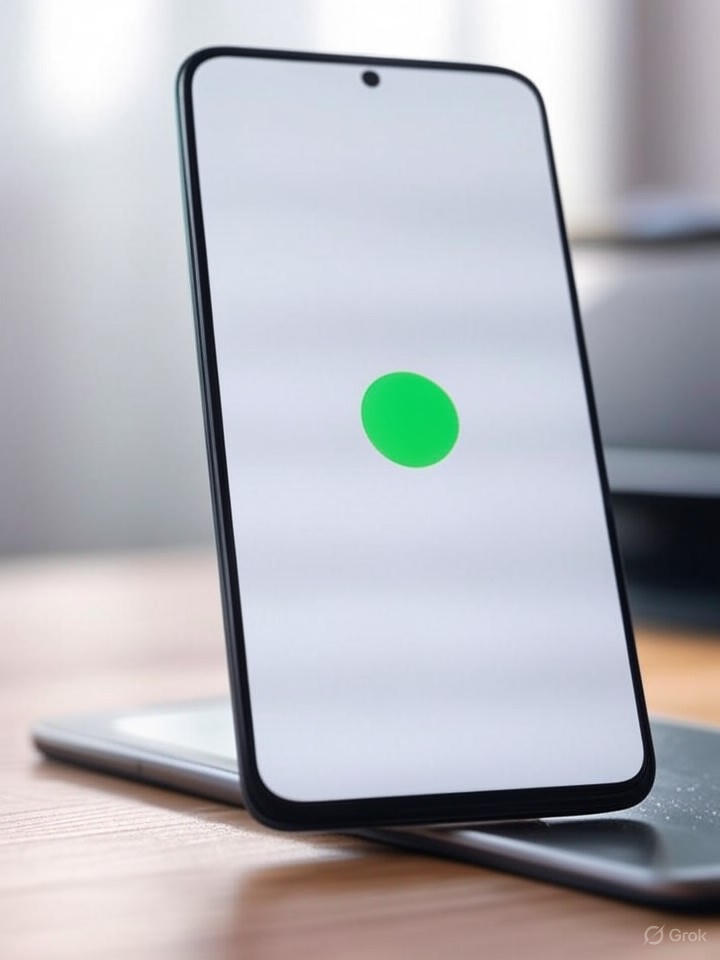The Privacy Sentinel in Your Pocket
In an era where digital privacy is paramount, Android users have increasingly noticed a small green dot appearing at the top of their screens. This unassuming indicator, introduced in Android 12, serves as a crucial alert that an app is accessing the device’s camera or microphone. Far from a glitch, it’s a deliberate feature designed to empower users with transparency over their personal data, reflecting Google’s ongoing commitment to bolstering security in its mobile operating system.
The green dot’s appearance can be triggered by legitimate activities, such as video calls or voice recordings, but it also flags potential unauthorized access. Industry experts note that this visual cue draws inspiration from similar privacy indicators on iOS, aiming to prevent surreptitious surveillance by malicious apps. As smartphones become extensions of our daily lives, such mechanisms are vital for maintaining user trust.
Decoding the Dot’s Behavior
When the green dot illuminates, swiping down from the top of the screen reveals a privacy dashboard that specifies whether the camera, microphone, or both are in use. This dashboard, accessible via Settings > Privacy > Privacy Dashboard, lists recent app activities, allowing users to pinpoint which application is responsible. For instance, if a social media app activates the camera without clear reason, it could signal a need for permission review.
Moreover, the dot’s persistence varies by Android version and device manufacturer. On Samsung devices, for example, it’s integrated with One UI, while Google Pixel phones offer seamless integration with stock Android. This feature not only informs but also educates users on app behaviors, fostering a more security-conscious ecosystem.
Strategies for Management and Removal
To remove the green dot, users must address the root cause: app permissions. Navigating to Settings > Apps > [App Name] > Permissions enables revoking access to the camera or microphone. If the dot appears erroneously, force-stopping the app or restarting the device often resolves it, though persistent issues may warrant a software update or factory reset as a last resort.
For those seeking deeper control, third-party tools like privacy-focused launchers can enhance monitoring, but experts caution against over-reliance on them due to potential compatibility issues. According to a recent analysis by SlashGear, disabling the indicator entirely isn’t recommended, as it undermines the privacy safeguards it’s meant to provide.
Implications for Developers and Users
App developers face new challenges with this feature, as it compels transparent data practices to avoid user backlash. Google’s guidelines now emphasize justifying sensor access, pushing for innovations in privacy-by-design. For industry insiders, this evolution signals a shift toward proactive user empowerment, potentially influencing future regulations like those under Europe’s GDPR.
However, not all users appreciate the dot’s visibility, viewing it as intrusive during normal use. Balancing alertness with unobtrusiveness remains a key debate, with some proposing customizable notification options in upcoming Android releases.
Evolving Privacy Standards
As cyber threats proliferate, features like the green dot exemplify how operating systems are adapting. Publications such as Daily Mail Online have highlighted its role in alerting users to possible spying, underscoring its importance in an age of sophisticated malware.
Ultimately, while the green dot might startle at first, it represents a stride toward greater digital autonomy. By staying informed and managing permissions diligently, Android users can harness this tool to safeguard their privacy effectively, ensuring their devices remain secure allies rather than vulnerabilities.




 WebProNews is an iEntry Publication
WebProNews is an iEntry Publication